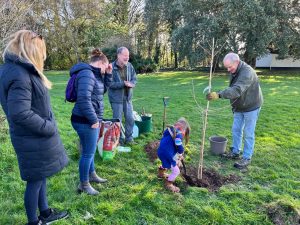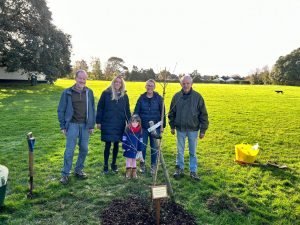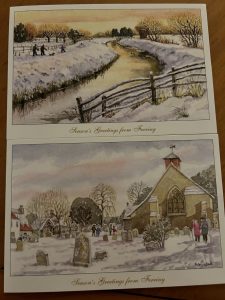Chalk grassland, a globally important habitat, has sadly been in decline since WWII. Led by the National Trust and funded by a £2.23 million grant from the National Lottery Heritage Fund and People’s Postcode Lottery, this 10 core partnership aims to connect landowners, farmers and communities around Brighton and Hove, Eastbourne and Lewes with pockets of chalk grassland along the eastern end of the South Downs.

The following delivery partners, Historic England, the Royal Botanic Gardens at Kew and Writing our Legacy, will help deliver specialist activity on specific projects.
This grant will help restore rare habitats and lost landscapes, bringing history and local cultures to life. The partnership’s aim is give volunteers the opportunity to learn new skills and to support the partnership’s vision.
Over 800 hectares of land are to be managed to benefit nature, including 60 hectares of golf course land to be returned to species-rich chalk downland and around 40 sites to be returned to active grazing. As well as the restoration of five historic dew ponds, the long-term future of one of Britain’s most endangered insects, the Wart-biter bush-cricket among other species, will hopefully be secured.
Grazing is vital to preserving and restoring chalk grassland and the project aims to encourage the return of this important tradition. Large scale conservation grazing is being led by the South Downs National Park Authority to restore a new generation of graziers coming together to establish a system that is economically sustainable.
After a break for welcome cups of tea members were treated to warm mince pies as the traditional pre-Christmas treat!
Graham Tuppen then took to the floor with news of local wildlife sightings and happenings in the ever popular Nature Notes slot. Graham opened with a delightful photograph of the planting of a pretty Field Maple tree in Little Twitten in fond memory of our late Nature expert, committee member and friend, Tricia Hall. A large group of members and friends were present, including Tricia’s two daughters Jackie and Amanda and her little granddaughter Wren, who took her tree planting duties very seriously and was most reluctant to hand over the spade! During the last clean-up of the year around Warren Pond, a large Willow tree was cut back from the water’s edge and plans to enhance the biodiversity of the pond and bankside were discussed. As Warren Pond is one of the few remaining areas left in Ferring that can support a diverse range of pond life including waterfowl, birds and insects, this precious habitat is certainly worth preserving and enhancing. Graham then showed a photograph of members planting bulbs around the thriving Community Orchard which will hopefully enhance this worthwhile developing area.
Another photograph showed the flooded fields on the Southern Gap attracting many bird species including twenty Dunlin, five or six species of Gull, a Knot, a Little Stint, and eight Brent Geese. Also Kingfishers had been spotted mainly in the area to the north of the Rife.
Ed Miller concluded the meeting with some planning news and informed members that the groundworks had already begun on the 74 house estate west of the ASDA supermarket. The plans for the proposed housing estate on Highdown Vineyard had still not been submitted. While the planning application for houses on the Lansdowne Nursery site was still pending as is the application for the sale of alcohol and extended hours at the currently named Kingsley’s Coffee Shop.

